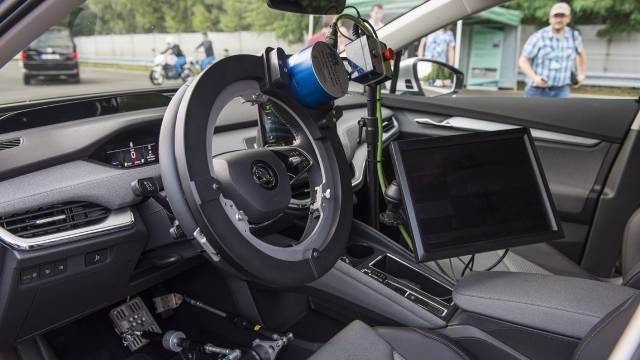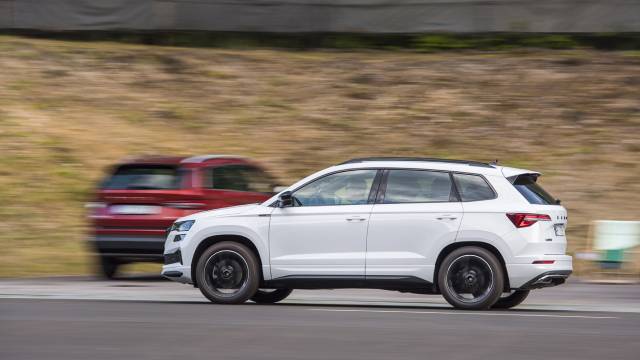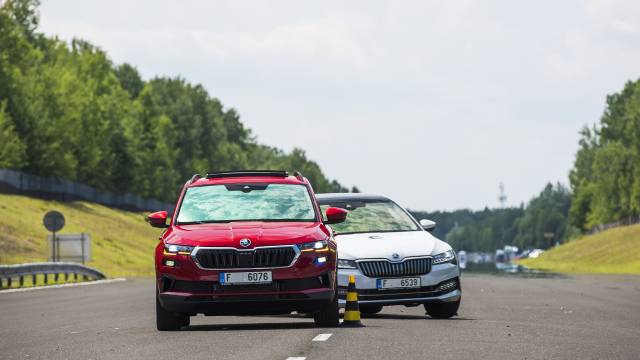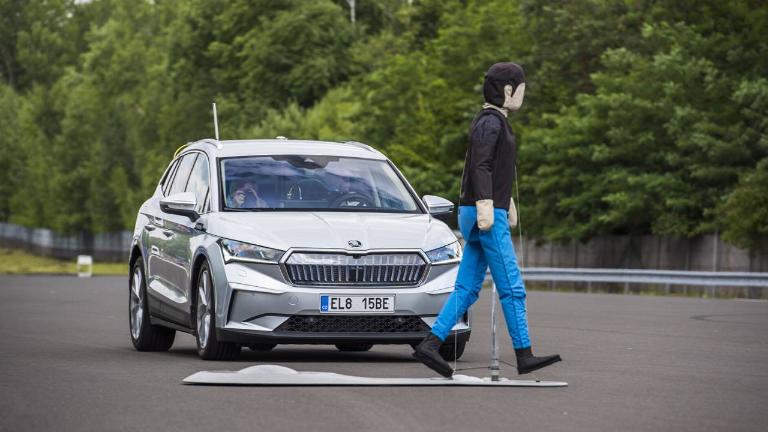Škoda safety: increasingly advanced driving assistance systems
From Crew Protect Assist to Emergency Assist, Škoda sensors and software are designed to ensure the highest possible safety, in line with the strict Euro NCAP requirements.
Among Škoda's many safety systems is Crew Protect Assist, whose task is to protect occupants as effectively as possible when there is a risk of an imminent collision. When the vehicle recognizes a potential dangerous situation, it reacts immediately by tightening seat belts and closing windows. Tests are conducted at the Škoda test polygon, where real-world traffic scenarios such as rear-end collisions are replicated, which are unfortunately quite common and therefore highly regarded by developers.
Euro NCAP crash tests
To make a car safe and meet the strict standards, certified through crash tests, set by the independent body Euro NCAP, assistance systems and other active safety features must be thoroughly tested. The tests require a high degree of accuracy, and repeatability: "Euro NCAP requires testing about 100 different emergency braking system scenarios involving pedestrians and other vulnerable road users" explains Lukáš Eis from Škoda. The car is supposed to brake automatically when a pedestrian (adult or child), cyclist or motorcyclist is at a risk of being hit, and it must do so at different approach speeds, considering various possible angles of impact. The purpose of the system is to detect the imminent collision and apply the brakes to avoid the accident if possible, or at least to reduce the speed of impact as much as possible.

Testing with robots
"The system also works in normal traffic, without disturbing the driver but protecting inattentive road users. The robots we use during the tests serve to achieve the required levels of accuracy and repeatability" Eis resumes. One of the tests involves directing a robot-driven Škoda Enyaq iV towards a collision with a dummy pedestrian. Test supervisor Martin Najman is at the wheel but only supervises the situation without actually controlling the vehicle. "I start the car, but then I just hold a kill switch: since the interaction between car and pedestrian must be accurate within 5 centimeters, everything is controlled by the robot using differential GPS" Najman explains. Testing all scenarios related to a single safety system can take more than six weeks, including nighttime scenarios with artificial lighting.

Emergency braking
To activate emergency braking, radars or cameras must detect a hazard, but some other active safety systems also come into play: in some cases, several inputs must be evaluated at the same time. In theory, the car that is about to collide should activate emergency braking. "In this case, the car is able to trigger the brakes when the speed difference between the vehicles is within 60 km/h" explains Petr Dudík, developer of Škoda assistance systems. However, in the case of a potential rear-end collision, Škoda cars can also rely on a feature that helps those behind the wheel in evasive maneuvers. "If the steering wheel movement made by the driver indicates that he or she wants to avoid an obstacle, the car will assess whether there is a risk of collision with anyone or anything nearby. If this risk is not detected, the system will help the driver manage this maneuver in the best possible way and not end up off the road" Dudík added.

Lane Assist
The car evaluates data from sensors and other systems, including Lane Assist, which uses a camera to detect not only white and yellow lines but also roadsides with asphalt-gravel or asphalt-grass transitions, curbs, concrete barriers, obstacles, and more. Lane Assist works at speeds above 65 km/h. "To activate the system, the camera must detect the lane boundary on one side and then use it as a reference point to 'guide' the driver" says Ondřej Smetana. The system detects the distance between the car and the lane boundary, evaluates the speed at which the car is approaching or moving away from it, and adjusts the steering accordingly. "Lane Assist is not active at lower speeds and does not work on sharp corners with lateral acceleration of 3 m/s ore more. Additionally, the system also detects driver activity through the steering wheel and alerts if anomalies are detected". On gentler curves, the system allows the driver to "cut" the curve, i.e., to get as close as possible to its inner edge. Similarly, the system does not intervene when turn signals are used (unless a vehicle is detected in the driver's blind spot). "The driver can always override the assistance system by exerting force" concludes Smetana.
Emergency Assist
Sensors and some of these features are also used by Emergency Assist, which can stop the car if it detects that the driver is inactive. Before stopping the vehicle, it uses several warnings: initially, a warning sound and a message on the display, then a gentle braking - both of which can be useful for waking up a drowsy driver, for example. But if the driver continues to not regain control of the steering wheel, the car also prepares for a collision scenario. "The windows are rolled up, to 55 mm, the sunroof closes, and the seat belts tighten. Then the lights flash, the horn sounds, and the car stops; then it unlocks and the interior lights come on. If the driver doesn’t react, emergency services are called after 15 seconds" explains Jiří Splítek. For Emergency Assist to work, Lane Assist or Travel Assist must have been activated; the procedure is initiated after one of these two systems is automatically deactivated: in the first case after two steering inputs, in the second after 25 seconds of inactivity.
Developers
Škoda developers are tasked not only with fine-tuning the functionality of these assistance systems, which are designed to help the driver in emergency situations, but they also work on additional features based on those already in use. For example, the new Škoda Superb will be equipped with an advanced Driver Fatigue Recognition system, while other models will also get a new Cornering Assistant. There are also completely new areas, such as automotive cybersecurity in accordance with the UNECE regulation. These requirements are intended to ensure the reliable operation of assistance systems and prevent the possibility of external control of the car.
Source: ŠKODA
VGI | Responsible OU: VP | Creation date: article date | Class 9.1
